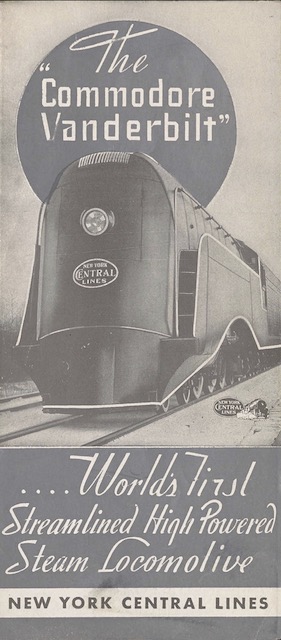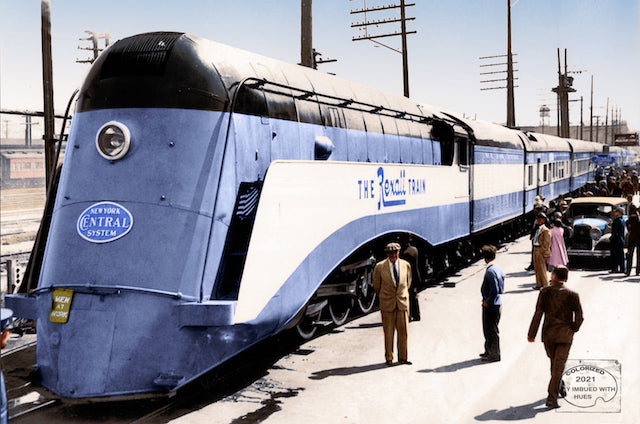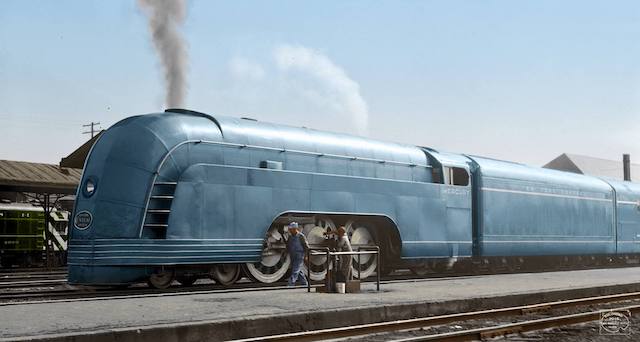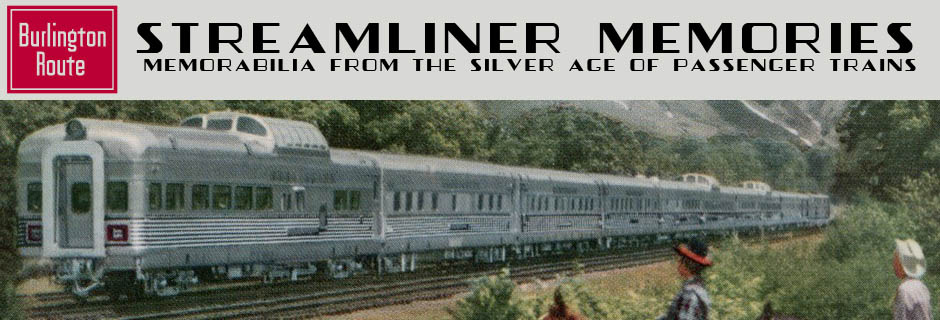In 1934, even before the introduction of the Burlington Zephyr and Union Pacific’s M-10000, New York Central decided to jump on the streamlining bandwagon by putting a shroud on one of its Hudson locomotives. Carl Kantola, a civil engineer who worked for the New York Central, told the story of this locomotive in an 1981 article in the New York Central System Historical Society’s magazine.

Click image to download a 1.4-MB PDF of this brochure from the David Rumsey map collection.
According to Kantola, he drew a sketch of the shroud early in 1934 and showed it to Paul Kiefer, the railroad’s motive power engineer who designed the Hudsons in 1926. Kiefer liked the idea and persuaded the company president to support it. The shrouding was applied to locomotive 5344, which had just been completed in New York Central’s own shops. It was the first steam locomotive to be streamlined in the United States.
The work began on November 1 and finished on December 14. The locomotive was presented to the public on December 27. “The New York Central presents this streamlined engine, President F. E. Williamson has announced, as evidence of its belief that, despite recent developments in the use of other fuels, the day of the steam locomotive is far from past,” states the brochure. Supposedly, the streamlining had a practical benefit as well: “Model tests in a wind tunnel indicated that this streamlining would reduce headend air resistance by 30 percent at speeds of from 60 to 80 miles per hour,” wrote Kantola.
To put it on public display in Grand Central Terminal, they had to lower the shroud by two inches and fill the boiler with water to fit it under the electric wires that powered locomotives into and out of the terminal tunnels. Although the locomotive was called the Commodore Vanderbilt, and the Central had a train of the same name, the locomotive was initially put to work hauling the 20th Century Limited.

Click image for a larger view of this photo colorized by Imbued with Hues.
In early 1936, Kantola helped install similar shrouding on a New York Central 4-8-2 locomotive on behalf of the United Drug Company, which oversaw a chain of 10,000 drug stores called Rexall. The company used it to haul a publicity train to promote Rexall drug products. The train travelled 29,000 miles to all of the 48 states except Nevada.

Click image for a larger view of this photo colorized by Imbued with Hues (Patty Allison).
Later in 1936, Kantola helped apply a similar design to two 4-6-2 locomotives that would power the Mercury, a train that was streamlined by smoothing the rooflines of old commuter cars. Henry Dreyfuss designed the interiors of the new cars and was credited with the locomotive design, but it actually looks much like the Vanderbilt and nothing like the 20th Century Limited streamlined locomotives Dreyfuss later designed.
